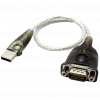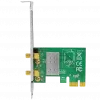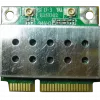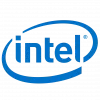Windows Server 2003 R2, an update of Windows Server 2003, was released to manufacturing on 6 December 2005. It is distributed on two CDs, with one CD being the Windows Server 2003 SP1 CD. The other CD adds many optionally installable features for Windows Server 2003. The R2 update was released for all x86 and x64 versions. Windows Server 2003 R2 Enterprise Edition was not released for Itanium.
New features
- Branch Office Server Management
- Centralized management tools for file and printers
- Enhanced Distributed File System (DFS) namespace management interface
- More efficient WAN data replication with Remote Differential Compression.
- Identity and Access Management
- Extranet Single Sign-On and identity federation
- Centralized administration of extranet application access
- Automated disabling of extranet access based on Active Directory account information
- User access logging
- Cross-platform web Single Sign-On and password synchronization using Network Information Service (NIS)
- Storage Management
- File Server Resource Manager (storage utilization reporting)
- Enhanced quota management
- File screening limits files types allowed
- Storage Manager for Storage Area Networks (SAN) (storage array configuration)
- Server Virtualization
- A new licensing policy allows up to 4 virtual instances on Enterprise Edition and Unlimited on Datacenter Edition
- Utilities and SDK for UNIX-Based Applications add-on, giving a relatively full Unix development environment.
- Base Utilities
- SVR-5 Utilities
- Base SDK
- GNU SDK
- GNU Utilities
- Perl 5
- Visual Studio Debugger Add-in
Service Pack 2
Service Pack 2 for Windows Server 2003 was released on 13 March 2007. The release date was originally scheduled for the first half of 2006. On 13 June 2006, Microsoft made an initial test version of Service Pack 2 available to Microsoft Connect users, with a build number of 2721. This was followed by build 2805, known as Beta 2 Refresh. The latest build is the build 3959.
Microsoft has described Service Pack 2 as a "standard" service pack release containing previously-released security updates, hotfixes, and reliability and performance improvements. In addition, Service Pack 2 contains Microsoft Management Console 3.0, Windows Deployment Services (which replaces Remote Installation Services), support for WPA2, and improvements to IPsec and MSConfig. Service Pack 2 also adds Windows Server 2003 Scalable Networking Pack (SNP), which allows hardware acceleration for processing network packets, thereby enabling faster throughput. SNP was previously available as an out-of-band update for Windows Server 2003 Service Pack 1.





